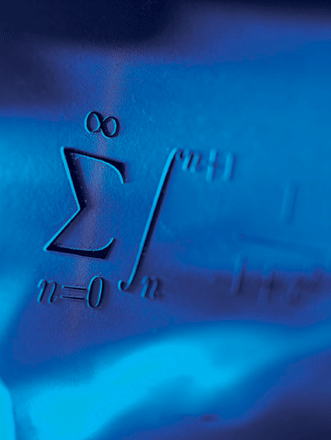Minor Introductions: Mathematics

The minor program in mathematics is designed to give the students a short view of what constitutes modern mathematics beyond first-year introductory courses, most commonly two semesters of calculus. The mathematics courses taken by students in other disciplines are usually geared towards using certain methods and practical computation. However, one might also want to understand the reasons, mechanisms, and axiomatic structure underlying the results. For this, one must also learn the proofs of mathematical theorems and obtain from them further mathematical results. This is what is generally considered doing mathematics as opposed to using mathematics.
The kind of student that the program wishes to attract is one who has a keen interest in studying abstract structures and following intricate logical arguments. These capabilities are indispensable for doing proofs. In freshmen courses, an instructor of mathematics sometimes meets a handful of students who can easily see the general structure or idea beyond the repetition of similar examples and who get excited when a general notion is introduced at a more theoretical level. These are the students who are ready to take the challenge of studying further these abstractions and who will benefit most from a minor in mathematics.
Students applying to the minor program in mathematics must have completed a year of the calculus sequence with at least a B grade. No other specialized course or background is necessary. For example, many mathematics courses have as their prerequisite the yearlong course Abstract Mathematics, which basically provides an education on how to do proofs. This prerequisite is waived for students in the minor program. But this means a minor student is expected to have enough mathematical maturity to make up for this gap.
In the minor program, students take 4 required courses, 2 from each of mathematics' two classical well-established areas, algebra and analysis. These are Advanced Calculus I, Complex Analysis I, Linear Algebra I, and Algebra I. They form a well-balanced introduction to modern mathematics. Advanced Calculus (also called analysis) explains the theory of calculus. To give an example for comparison, in calculus courses one learns how to integrate many functions; in Advanced Calculus one learns the details of the argument why a continuous function has an integral. Complex Analysis continues the lesson with complex numbers and has a more geometric flavor. Linear Algebra generalizes the notion of a vector and also focuses on solving linear equations with matrices; it also has strong geometric connections. Algebra concerns structures called groups, rings, and fields, which are the correct setting for the algebra one meets in high school.
The required courses are also essential for an understanding of more advanced courses in their and other areas, two of which should be taken as electives. A good selection of electives would include courses in other areas such as topology, geometry, number theory, and differential equations so that students would have an idea of some of the newer developments in modern mathematics. The purpose of the elective courses, as well as the whole minor program, is not to specialize in a narrow area but rather to broaden one's understanding.